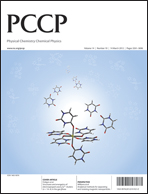A composite cathode material for lithium ion battery applications, Mo-doped LiFePO4/C, is obtained through a facile and fast microwave-assisted synthesis method. Rietveld analysis of LiFePO4-based structural models using synchrotron X-ray diffraction data shows that Mo-ions substitute onto the Fe sites and displace Fe-ions to the Li sites. Supervalent Mo6+ doping can act to introduce Li ion vacancies due to the charge compensation effect and therefore facilitate lithium ion diffusion during charging/discharging. Transmission electron microscope images demonstrate that the pure and doped LiFePO4 nanoparticles were uniformly covered by an approximately 5 nm thin layer of graphitic carbon. Amorphous carbon on the graphitic carbon-coated pure and doped LiFePO4 particles forms a three-dimensional (3D) conductive carbon network, effectively improving the conductivity of these materials. The combined effects of Mo-doping and the 3D carbon network dramatically enhance the electrochemical performance of these LiFePO4 cathodes. In particular, Mo-doped LiFePO4/C delivers a reversible capacity of 162 mA h g−1 at a current of 0.5 C and shows enhanced capacity retention compared to that of undoped LiFePO4/C. Moreover, the electrode exhibits excellent rate capability, with an associated high discharge capacity and good electrochemical reversibility.

You have access to this article
 Please wait while we load your content...
Something went wrong. Try again?
Please wait while we load your content...
Something went wrong. Try again?


 Please wait while we load your content...
Please wait while we load your content...